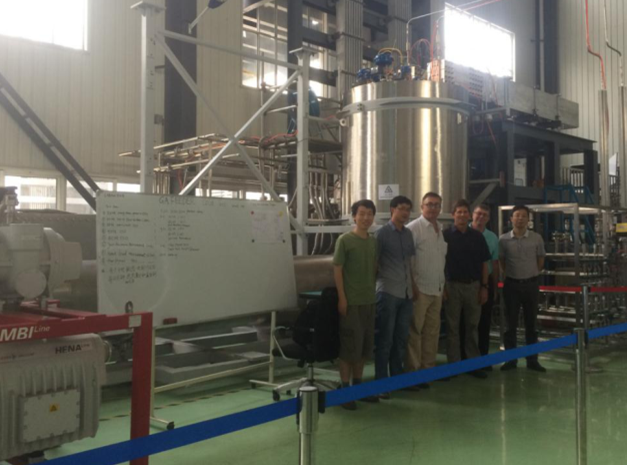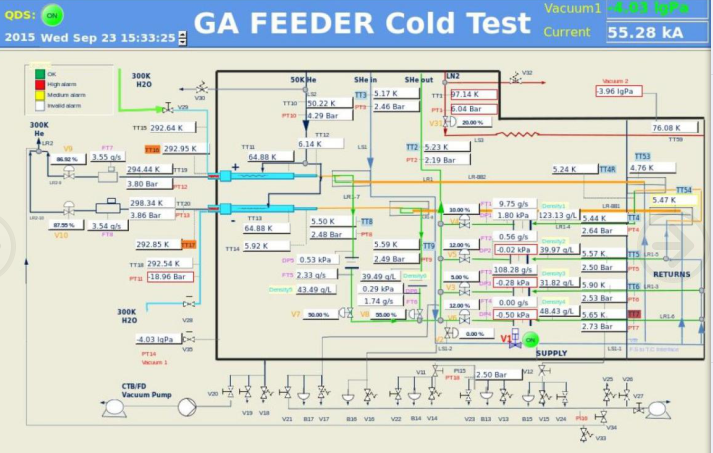With the cooperation with GA, Academy of Sciences Institute of Plasma Physics (ASIPP) developed and demonstrated the large superconducting feeder system that was entrusted by US General Atomics (GA) entrusted in september, 2015.The system, which will be used for ITER Central Solenoid Module (CSM) testing, has passed the full current steady-state test at 55kA as well as a number of tests designed to simulate various operational modes. Three engineers from GA, Dr. Zbigniew PIEC, Mr. Kurt SCHAUBEL and Mr. Samuel LLOYD participated in and witnessed the performance tests during the week of September 21.
During CS testing at GA, the superconducting Feeder System will distribute the required large electrical current and cryogenic coolants to the CSM while monitoring and controlling the temperature, pressure, flow and voltage drop through all elements of the superconducting components. It will function as an integral part of the system to rapidly dissipate the energy stored in the coils, and to protect the cryogenic system; furthermore, it completes the whole process test and control for the operation of coils, thus acting as the intelligent center of central solenoid coil measurement and control. The system is complex, requiring multidisciplinary engineering fields including superconductivity, low-temperature, vacuum, mechanical process, measurement and control and high current electronics. It needs to meet various requirements like low temperature (5K), high vacuum (1E-5Pa), high voltage insulation (15 kV), low thermal load (70 W), low superconducting joint resistance (2 nΩ?), etc. The system presents significant challenges for design calculations, complex manufacturing assembly processes, measurement and control of a large volume of data, and stringent quality and safety requirements.
The design and integration, manufacturing and assembly, and factory acceptance testing were accomplished in cooperation with GA. The following were demonstrated in September: steady-state operation at a current of 55kA, successful loss of flow accident test. electrical resistance measurement of four pairs of superconducting joints all under 0.6 nΩ. This low joint resistance reduces low-temperature cryogenic thermal load by 18W. Furthermore, two pairs of superconducting twin box joints successfully adopt the new technology of clamping with indium wire under pressure for the first time. Last but not the least, quench time for the system during LOFA has exceeded 10 minutes, which breaks the safety record of unstable operation for the heavy current.
The successful test can also be regarded as a pre-qualification to development of the feeder for ITER. The accumulated technology and experience will be directly applicable to the successful execution of ITER Feeders.

Superconducting feeder system acceptance test on site
(From left: DING Kaizhong, Zhou Tingshi, Zbigniew PIECP,Kurt SCHAUBEL Samuel LLOYD and LU Kun)(Image by DING Kaizhong)

55 kA steady state operation control interface (Image by DING Kaizhong)
Contact:
Dr Kaizhong DING
Institute of Plasma Physics,Chinese Academy of Sciences
NO. 350, Shushanhu Road, Hefei, Anhui 230031, China
Tel: +86-65593059
E-mail: kzding@ipp.ac.cn